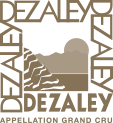History of Dézaley
A grape-growing tradition with a long history
A grape-growing tradition with a long history

In 1797 Napolean passed through Dézaley and marveled at the sight – these hanging gardens – and wrote moving words on the stone that has since carried his name.

The 18th century brought progress and new and even revolutionary ideas. The managing classes became interested in industry and began to sell their land. It gave an opportunity to the inhabitants of the region who become property owners to expand the terroir which, little by little, replaced other cultivated crops. In 1797 Napolean passed through Dézaley and marveled at the sight – these hanging gardens – and wrote moving words on the stone that has since carried his name.
Some months later, people in Vaud had their own revolution, with help from France. In 1803 Vaud became an independent canton. The City of Lausanne repurchased Clos des Moines that same year. During the 19th century parishes were split and Dézaley was delivered to the commune of Puidoux. The only things missing were good roads, to achieve the state Dézaley is in today. During the first half of the 20th century the growing urbanization of the countryside worried some local authorities who were conscious of a need to protect the landscape of Lavaux and wine production. As a response to a real estate project in the area of the Tour de Marsens, Canton Vaud proposed in 1949 an initial project covering some 100 hectares with a servitude to ban construction. Starting in the 1960s the commune of Puidoux asked for a zoning law to protect the vineyards. And the memory is still alive of the popular initiative of 1977 which resulted in the site of Lavaux coming under protection by the Vaud Constitution; since 28 June 2007 it has been a UNESCO World Heritage site.
L’AOC Dézaley Grand Gru
A unique terroir

The Dézaley and Calamin terroirs have qualities that are unique in the canton, that don’t match those of any other soil and/or “climat”.

Contact
Association Appellation Dézaley Grand Cru
Jean-François Chevalley
President
Route du Treytorrens 1
1096 En Dézaley
info@dezaley.ch
